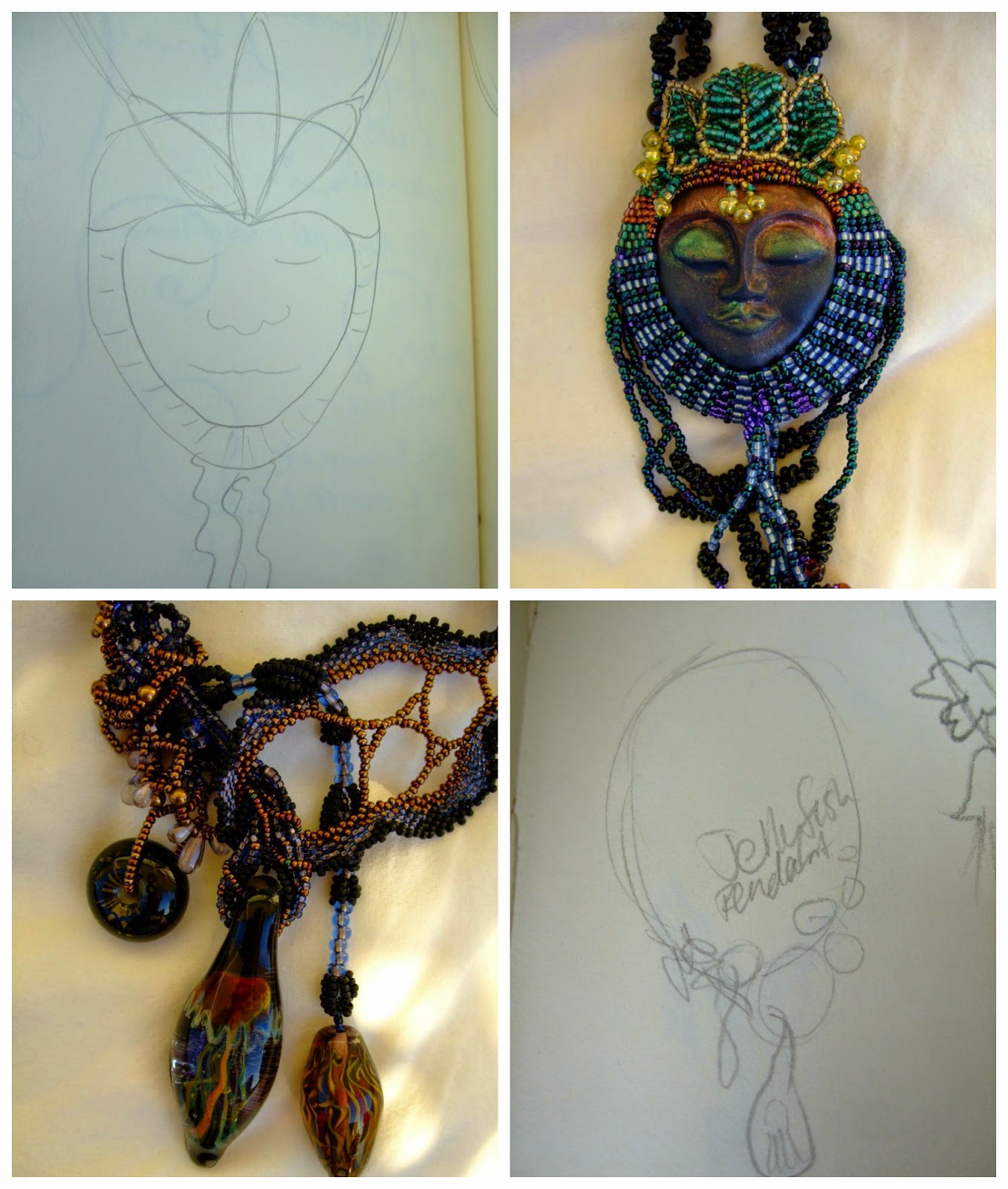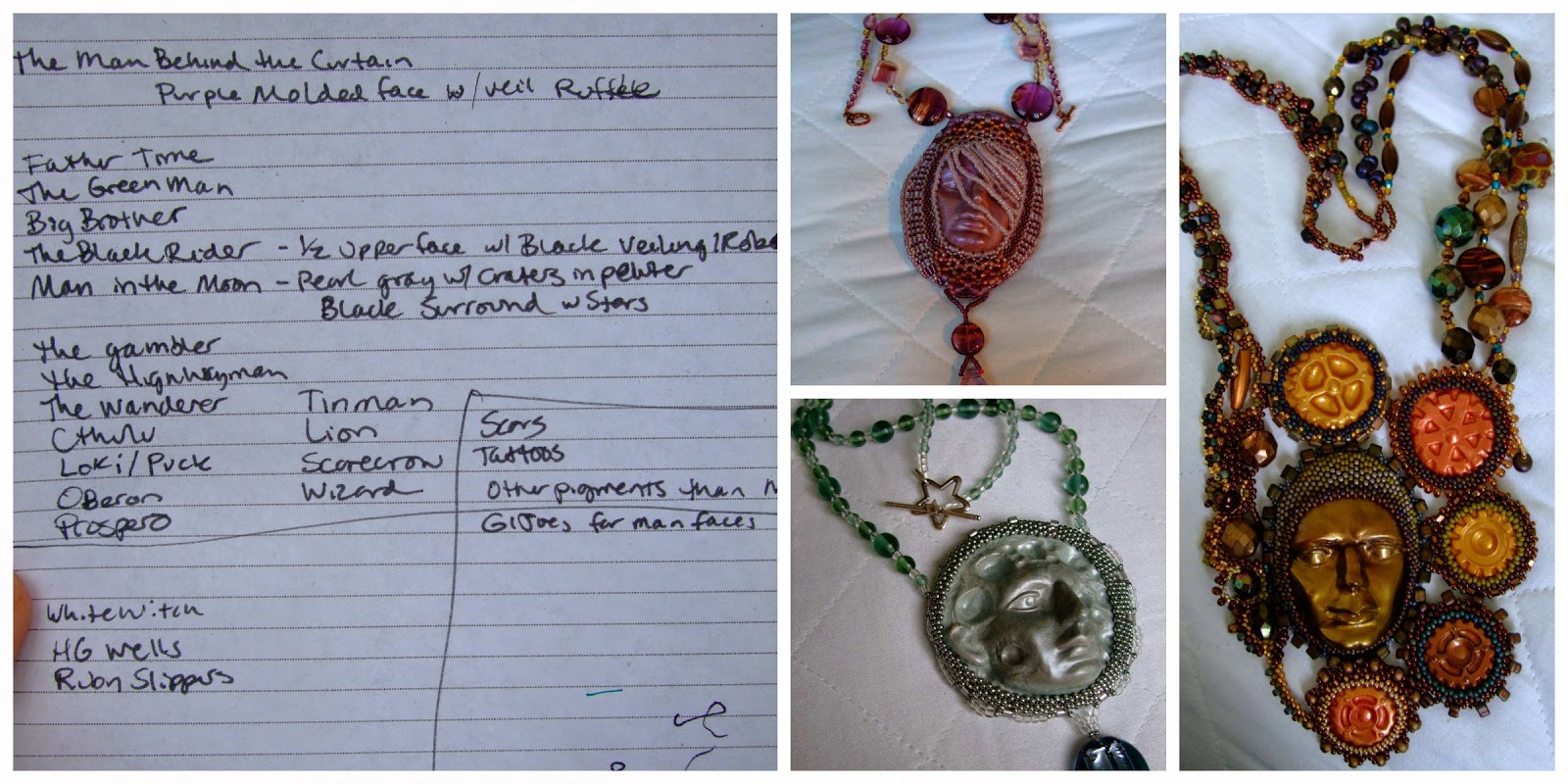Greetings, fellow bead addicts! Since my last post I have been spending my time recovering from minor surgery. Unfortunately this has not meant time beading...most of my bead boxes are too heavy for me to move around while I'm in the recovery period. Here's some eye candy anyway!!!
What I've been up to instead is a bunch of coloring and thinking about what projects I have coming up in the near future. Collecting and using new drawing and coloring utensils has sparked some new thoughts about the way I sketch and plan out my beadwork. Now, I don't sketch every piece beforehand...or even most of them. But when I feel my ideas are lacking or jumbled, often I reach for paper and pen to help organize my brain. Let me show you the different ways I've sketched in the past:
I have random pages like these sprinkled through all my sketch books. When I become focused on a theme or idea (like beetles or faces) I like to document all the different variations I can find - but in my style. This gives me a jumping off point for all of my different art beads that encompass the the theme...or tells me if I need to break out the polymer clay and make my own. I like to flip through these pages when I need an idea.

Sometimes a basic sketch leads to a finished design. Both of these simple sketches were based around the focal (the face or the jellyfish). As you can see, there's not a lot of detail or notes on these sketches...what you can't see on the rest of the page is all the other variations that I quick sketched for the same focal. I like doing these thumbnail sketches - possibility sketches - when I don't have a specific idea for the focal in question. They help me narrow down the overall shape of the design so I can start getting an idea of the seed and accent beads I might want to work with...and then usually, the beads take over.
 |
| Man Behind the Curtain, Man in the Moon, and Man in the Machine were all conceived from this concept list. |
Sometimes I riff with words - on this page you can see lists of concepts or titles that I was considering investigating. On the left are three finished necklaces that were born from the sketchbook page! You can see my brain went from fiction and folklore to Shakespeare and old country songs. A stream of consciousness like this often leads me to design epiphanies.
On larger, more epic scale pieces, I often find the need for a more detailed sketch. In these cases I try to make as many notes about color, shape, structure, and bead choice as possible. This helps me to know what I need to pull out of my stash, if I need to buy anything new, if there are going to be any structural issues I'm going to have to solve, etc.
These are a couple of more current sketches. On the right, shows some of the research I've been doing on prayer beads. Writing down information like this helps to cement it into my brain, so that when I am out in the world and encounter beads, I will remember things like I need 108 of the same bead if I want to make a mala (Buddhist prayer beads). On the left, shows a necklace design that I've got in the works, including a list of words that make me think of the focus of the piece - the color red.
What have these got to do with coloring? Well, (in my copious online recovery shopping) I discovered the super cool blog over at
Jetpens.com. In becoming obsessed with coloring utensils and reading all of their guides and reviews, I found
THIS post, a super cool guide to help students improve their note taking skills. Well, I thought, why can't I apply this to my bead sketch books? Oh, wait...I can! I'm actually wondering now why the concept of using color to aid my design sketches never occurred to me before now. Doh! I also really like the idea of using sticky flags to note recurrent themes...perhaps I will use little blue flags for ocean themed designs, green for flora designs, pink for people, etc. It sure would be neat to be able to pick up a sketch book and be able to quickly flip to the ideas I was thinking of...instead of having to flip through the entire book.
Do you ever sketch designs? How does it help you? I'm not trying to say that you should sketch...I know a lot of people think they can't "draw", and therefore sketching causes more anxiety than it should. The reality of sketching for yourself like this is that you are the only one your drawing needs to make sense to. No one ever needs to see your sketchbook! I find sketching most useful when I have either too many ideas, or not enough. For some reason, putting a pen to paper just helps get my creative juices flowing. If you haven't tried sketching lately, you might give it another go...you never know what ideas might emerge from the ink and paper!
Happy sketching (and beading...and coloring?),
Lindsay
Facebook
Blog
Etsy

















